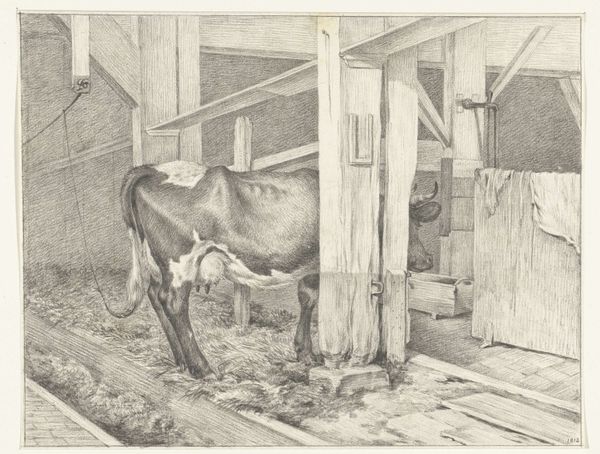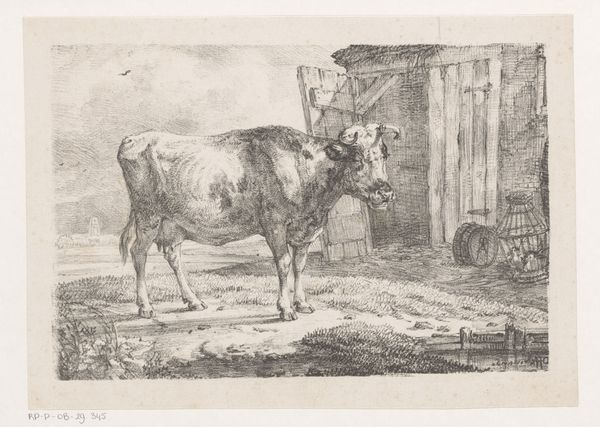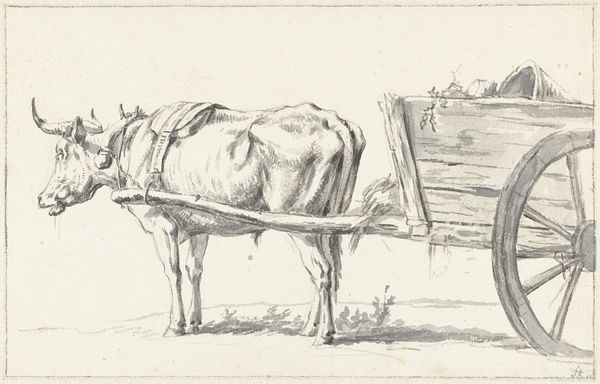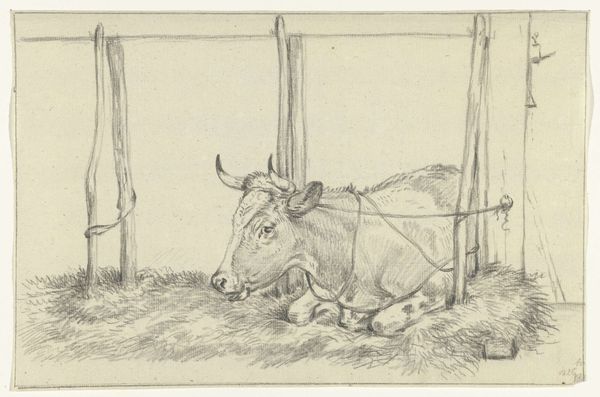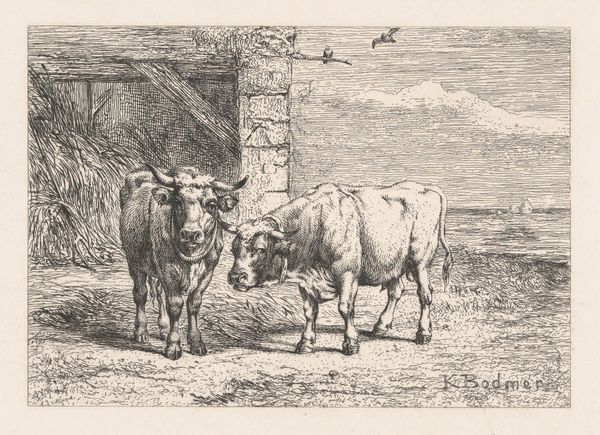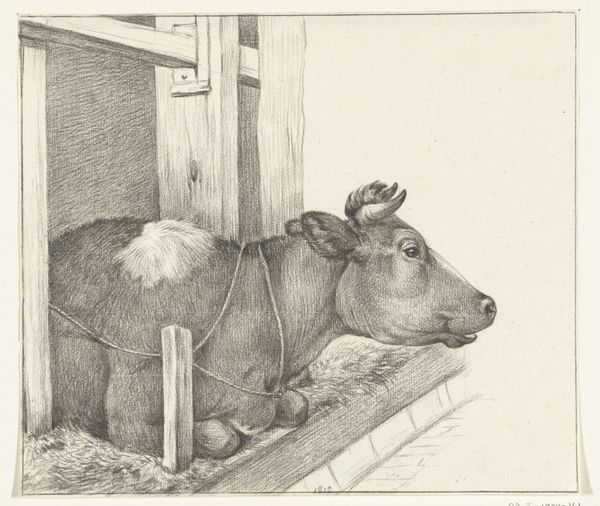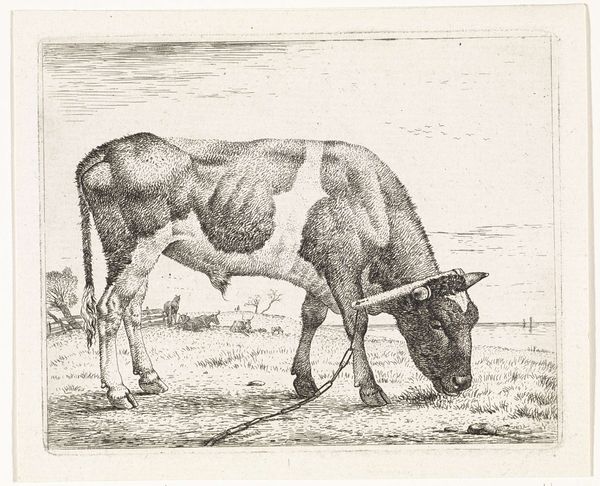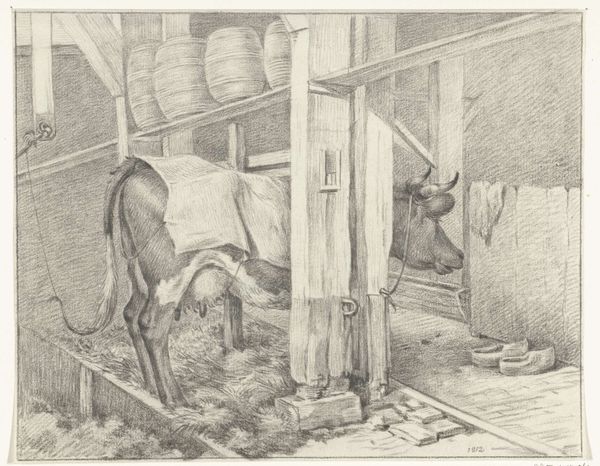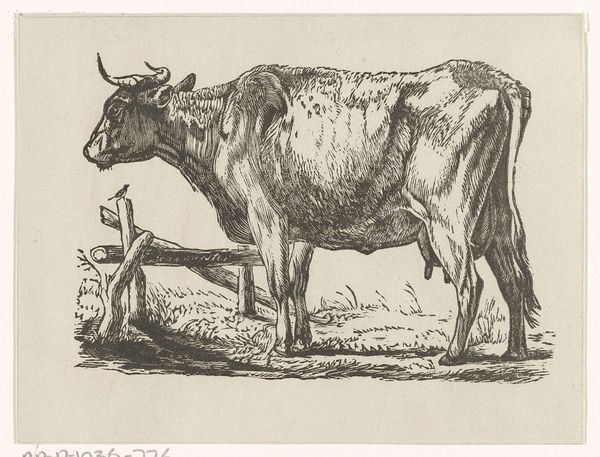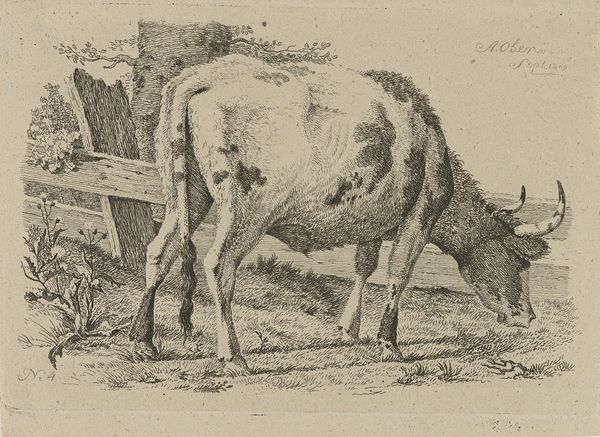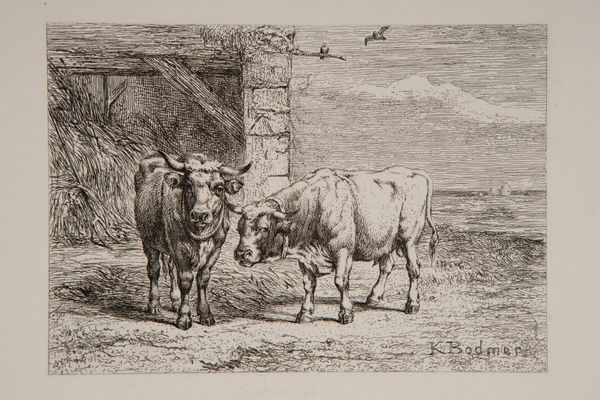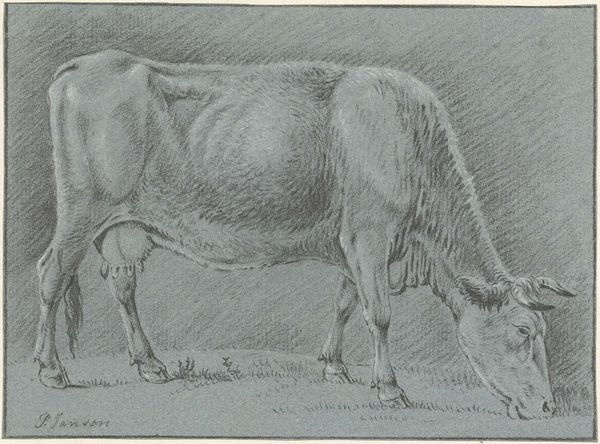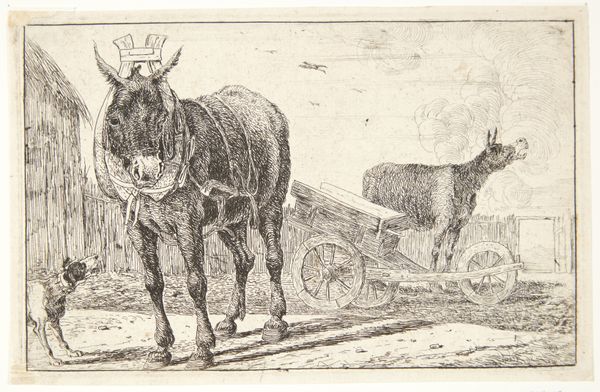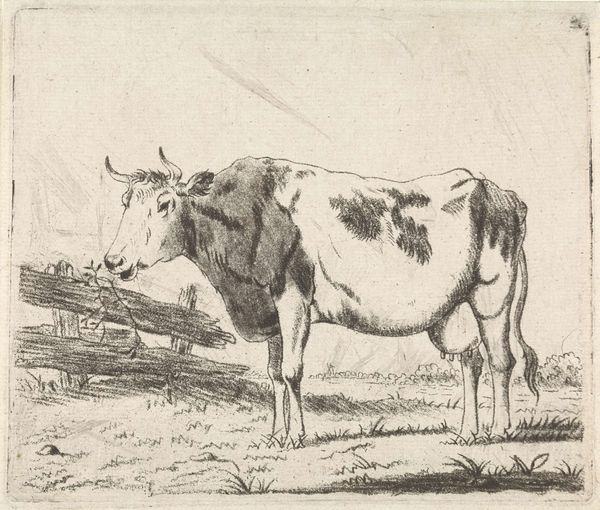
drawing, pencil
#
portrait
#
drawing
#
pencil sketch
#
romanticism
#
pencil
#
genre-painting
#
realism
Dimensions: height 220 mm, width 260 mm
Copyright: Rijks Museum: Open Domain
Curator: Welcome! Today, we’re examining "Staande koe in de stal," or "Standing Cow in the Stable," a pencil drawing created in 1812 by Jean Bernard, currently residing here at the Rijksmuseum. Editor: My first impression? Claustrophobia. There's something inherently unsettling about the tight framing and the cow’s constrained stance, isn't there? Curator: Precisely. Bernard's choice of medium is interesting too, given the rise of Romanticism at the time. It's more like a quick, informal study of rural life than a grand, idealized landscape. The rise of city life created a market and hunger to look back towards the past, an older idealized vision of agriculture. Editor: Absolutely, and the confinement underscores the economics of animal husbandry, really. It speaks to the instrumentalization of living beings, reduced to their function within an agricultural system. Curator: A powerful point. Consider how the era influenced our perception of art's role. With institutions like the Rijksmuseum taking root, works like these gained new relevance in educating and shaping public perception about national identity and cultural values. Editor: Yes, there's this interesting push-and-pull here. This work simultaneously seems documentary in its plainness and romantic, and also feels sentimental by representing farm animals. The gaze of this domesticated animal doesn’t communicate any of those at all, as the work itself feels trapped. The image raises an important ethical debate of our contemporary relation to the non-human animal that has gained awareness over time and debate due to activism and awareness movements. Curator: The contrast also emphasizes a certain tension. Despite appearing as simply a cow in a barn, the context frames the work beyond just animal portraiture to embody changing attitudes regarding rural life, public perception and their values in early 19th-century Netherlands. Editor: I am reminded to think about all the work that is hidden or ignored within larger institutional bodies, just like a cow quietly standing still at work to be milked and procreate. Curator: A great reminder. Examining these details reveals the rich layers of a seemingly straightforward pastoral scene. Editor: It's in the subtle observations like that where its value as an activist tool lies!
Comments
No comments
Be the first to comment and join the conversation on the ultimate creative platform.
